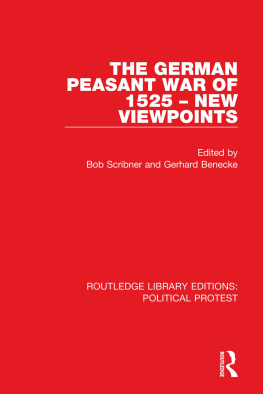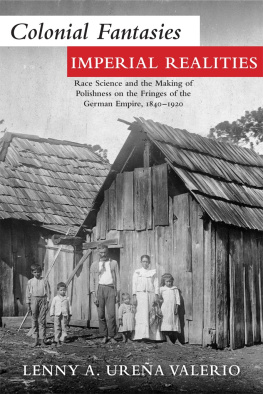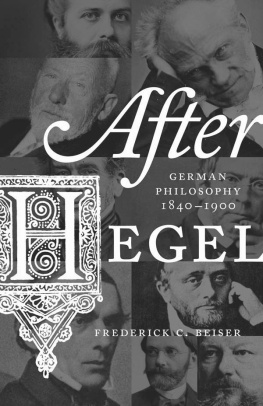ISBN 978-0-8131-5225-7
Library of Congress Catalog Card Number 72-80091
COPYRIGHT 1969 BY THE UNIVERSITY PRESS OF KENTUCKY
A statewide cooperative scholarly publishing agency serving Berea College, Centre College of Kentucky, Eastern Kentucky University, Kentucky State College, Morehead State University, Murray State University, University of Kentucky, University of Louisville, and Western Kentucky University.
Editorial and Sales Offices: Lexington, Kentucky 40506
To the memory of my father,
my first and best teacher
Preface
In the social history of the western world in the last two hundred years, few trends are as arresting as the gradual rise of the lower orders of society to a position of prominence in the planning of governments. It was once thought that the French Revolution alone had inaugurated the era of popular political ideology in Europe, and that it alone had begun the implementation of the idea of political equality through the concept of universal citizenship. It is now generally acknowledged, however, that while the revolution remains of inestimable importance in the development of democratic ideology, some of the roots of egalitarian political ideas can be found as early as the mid-eighteenth century in both the theory and the practice of enlightened absolutism.
One important facet of the development of egalitarianism in both a social and a political sense, and one which well illustrates the progress of social leveling under the old regime before the revolution, is the gradual abolition of serfdom in many countries of Europe. In many territories of Germany, for example, the final abolition of serfdom in the first decades of the nineteenth century was merely the ultimate step of a series begun in the early years of the eighteenth century. But wherever the formal progress of social egalitarianism can be confirmed through legal innovations or structural changes in government, the progress of some sort of egalitarian ideology can also be confirmed. This study is an attempt to describe and to analyze the development of one aspect of such an ideology in Germanythe complex of opinions concerning the peasant and his place in society which accompanied agrarian reform in its most active years, roughly from 1770 to about 1840.
German agrarian reforms themselvesthat is, the actual legal and administrative aspects of reformhave been studied by numerous scholars in Germany and elsewhere for a long time, and there exists a fairly detailed and comprehensive body of literature on the subject. But a survey of the public literature accompanying this series of reforms has never been undertaken and scholars have remained largely silent on one of the most dramatic and significant concomitants of agrarian reformthe genesis and growth of a remarkable new image of the peasant. An understanding of the nature of this image and of the reasons for its growth is essential not only to a comprehension of the public support for agrarian reform, but above all to the explanation of the public acceptance of the idea of the peasant as a full-fledged citizen. The liberation of the German peasant involved much more than institutional and legal changes; it involved freedom from the tyranny and oppression of a hostile and contemptuous public opinion.
At first glance, one is tempted to regard the rapid development of laudatory opinions concerning the peasant as merely the more or less natural outgrowth of a desire on the part of agrarian reformers to advance their goals. But further study makes it clear that the literature of this period was not often concerned with agriculture or the peasants in themselves, but rather with the peasants as parts of an entire social system. It also becomes apparent that the writers and commentators, no matter how abstract or timeless their specific arguments may have been, were themselves deeply involved in contemporary social questions. No matter how narrowly defined, therefore, reform literature cannot be seen as an internally coherent and systematic attempt to secure one or another reform, but must be regarded in its relationship to the whole picture of German public life in a period of vast social, economic, and political changes. By the year 1840, throughout every category of German publications in which they were mentioned, agriculture and the peasant had assumed a social importance far greater than was necessary merely to prove the advisability of reform. The transformation of the peasant in the public mind from the status of a creature almost less than human to that of a paragon of German national virtue is a phenomenon which transects the entire range of German social development in the years 1770-1840.
Because of the scarcity of works in English dealing in any way with the European and, specifically, the German peasantry, any work on this subject becomes peculiarly susceptible to certain misinterpretations stemming from the perhaps wholly understandable but nonetheless misplaced desire on the part of the reader to make a single book provide answers to a range of questions which an entire shelf of books could scarcely begin to cover. A general outline of the intentions (and nonintentions) of this study will perhaps obviate some of the disappointments.
Broadly speaking, it is here intended, first, to describe the changing image of the German peasant from a social pariah to a patriotic citizen of his fatherland. In the course of less than a century the peasant came to be considered as one who contributed special qualities and performed special duties of singular importance for his society. The second intention is to explain the development of this conception, or image, by relating the specific characteristics attributed to the peasant (as well as the increasingly numerous and valuable social functions he was supposed to perform) to the private and public concerns of German life as seen by those who wrote about him.
With this limited scope, the study does not attempt to address directly the problem of the concrete influence of this progressively developing image on actual agrarian reform or on the transformation of the objective conditions of peasant life. These changes are important for present purposes only insofar as they may have constituted an influence on the thoughts of those who devoted attention to the peasant and his problems generally. With few exceptions, therefore, actual alterations in agrarian relationships are included in the main body of the work only when they are essential to an understanding of the opinions of any given individual or group of individuals. Otherwise, they are relegated to a background chapter (), which is designed to provide minimum circumstantial context for the study.
The emphasis on opinion has certain other implications as well. Since opinions on matters of general public concern do not generally spring up, change, or disappear overnight, the chronological limits of a study dealing with such opinions can only be approximate and, if particular dates are actually used, even somewhat arbitrary. In this work, 1770 stands only to represent the beginning of a decade in which public discussion of agrarian issues and the peasant, as evident from the literature of the time, became quantitatively greater and qualitatively more intense than in preceding decades. Similarly, 1840 is used to represent the approximate point by which all the important and characteristic features of the new peasant image had become more or less fully developed and fixed as a conceptual type. The year 1848, which especially for those versed in German history might seem to be a more logical terminus, in fact merely demonstrates, in the argumentation surrounding the revolutions of that year and the Frankfurt Parliament, that the new image had already achieved maturity; from the standpoint of the development of the image itself, 1848 is of no special significance.










